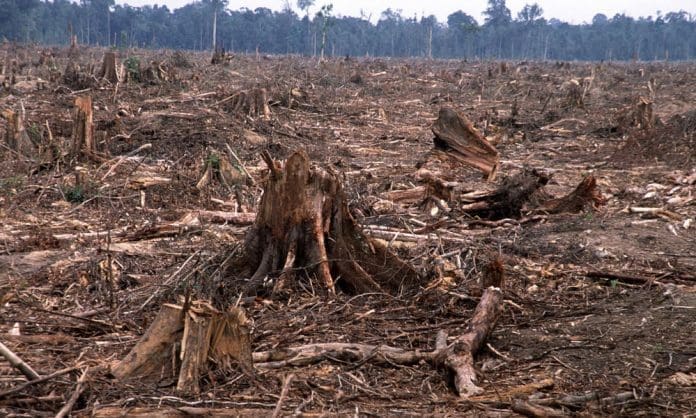More than 122 million people across Ghana, Niger, and Nigeria now face the threat of unsafe drinking water, marking an increase of 20 million over five years. New research by WaterAid and Tree Aid directly links this escalating crisis to widespread deforestation and vegetation loss that’s undermining freshwater systems throughout West Africa.
The study, titled “From Roots to Rivers: How Deforestation Impacts Freshwater Access,” analyzed 12 years of satellite data collected between 2013 and 2025 from the three countries. Researchers documented a measurable relationship between forest destruction and declining water quality and availability. Forests stabilize soils, filter pollutants, and regulate rainfall patterns. When they vanish, these natural protections collapse.
The data reveals that for every 1,000 hectares of forest cleared in Niger and Nigeria, approximately 9.25 hectares of surface water disappear. Nigeria loses 6.9 hectares of surface water per 1,000 hectares of forest lost, while Niger experiences an 11.6 hectare reduction.
Niger faces the most severe conditions, with 99.5 percent of available freshwater now at risk of poor quality and unsafe for direct consumption. In Nigeria, roughly 85.6 million people inhabit areas where surface water loss is directly connected to deforestation. Ghana’s challenge centers more on water contamination than complete loss, with forest removal causing increased sedimentation and pollution in rivers and reservoirs.
Between 2013 and 2025, Ghana lost approximately 298,000 hectares of vegetation, averaging 24,800 hectares annually. That annual rate equals roughly the size of Edinburgh, Scotland’s capital, or about 37,000 football pitches. Nigeria’s vegetation loss over the same timeframe reached 324,000 hectares. Niger, however, bucked the trend by successfully restoring 101,000 hectares through planned reforestation efforts.
Abdul Nashiru Mohammed, WaterAid’s Regional Director for West Africa, stated that trees draw water into the earth, enrich soil for farmers, and shield land from floods, but as forests fall, water vanishes at an alarming rate. He characterized deforestation’s impact on water access as a crisis slipping under global leaders’ radar.
The report estimates that 45 percent of people in Ghana, Niger, and Nigeria now live in areas classified as high water risk. Communities already witness the consequences through drying rivers, unpredictable rainfall, and contaminated water sources that once provided safe drinking supplies.
Agricultural expansion, logging, mining, and bushfires continue driving Ghana’s forest destruction. These activities, combined with population growth and shifting rainfall patterns, degrade the ecosystems feeding rivers, streams, and reservoirs. The result increases sedimentation and contamination of water bodies serving both rural and urban populations.
The study notes that globally, 75 percent of accessible freshwater originates from forested landscapes. Researchers warn that Ghana’s continued vegetation loss could trigger cascading effects on agriculture, public health, and biodiversity. They recommend treating water management, sanitation, and reforestation as one integrated system rather than separate development challenges.
The report describes a “rainfall paradox” where short term increases in precipitation mask the long term depletion of groundwater and loss of reliable freshwater systems. As tree cover declines, rainfall flows directly over exposed soil into waterways, carrying sediment, waste, and agricultural runoff.
Georges Bazongo, Tree Aid’s Director of Programs, emphasized that the findings underscore the need for reforestation and land restoration efforts grounded in inclusive forest governance that balance environmental protection with local needs.
The organizations released this research ahead of the COP30 climate summit in Belém, Brazil, urging governments to integrate forest and water protection into climate finance pledges. WaterAid and Tree Aid call for stronger collaboration between ministries often working in isolation, including those responsible for water, forestry, agriculture, and climate, to address what they describe as an intertwined crisis.
A recent WaterAid poll found that 93 percent of Ghanaians fear climate change will harm their future and their children’s prospects. The survey highlights widespread public anxiety about environmental degradation and its consequences for daily life.
Despite the grim statistics, the research offers cautious optimism, pointing to Niger’s success in restoring vegetation through long term planning, investment, and local participation. The authors suggest this demonstrates that damage caused by deforestation can be reversed with sustained commitment.
The report concludes that unless vegetation loss slows and restoration efforts scale up, the number of people exposed to unsafe water will continue rising, deepening a crisis already affecting more than 122 million people across the subregion.
Source: newsghana.com.gh











